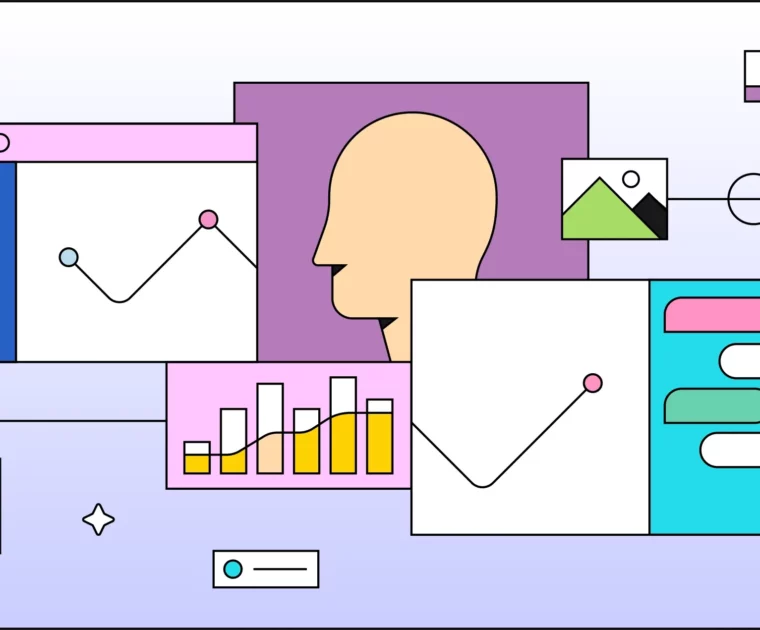A few years ago, back when everybody wanted to get into influencer marketing but nobody really understood it, the conversations about the ROI of using influencers pretty much revolved around earned media value. Few marketing teams really understood that they could set legit marketing goals then structure influencer campaigns that would help them meet those specific goals. One outcome many brands want to see as a result of an influencer campaign is generating traffic back to their websites and getting an influencer’s followers to actually take an action on the site.
Part of what The Shelf team has seen is that there are typically two big elements to consider with every “Traffic/Clicks” campaign.
The First Element…
Is a combination of having a sticky concept + amazing content from great storytellers + being able to sort of “Houdini” the logistics of running an influencer campaign. (You really do have to be kinda magical to pull off a great campaign if you’re a really small team.)
The Second Element…
Is making sure your website supports your influencer campaign by being well-designed AND by being set up to monitor and measure exactly what people are doing when they come to your site.
When customers use your website, they leave a TRAIL of data. This is data you can use to help you increase customer engagement, create better products, and capitalize on (and optimize) the strategies that are working so you’re not spinning your wheels and blowing through your budget on an influencer campaign that has stalled.

The challenge for a lot of businesses – especially those running influencer campaigns – is knowing what to track and how to interpret that data to improve your campaign’s performance. After all, the most meaningful data is actionable data. Yes, you need to track what happens in your influencer campaign and that means getting data on your influencer partners and their followers.
So, I compiled this list of the top user actions marketers should track and what they mean for your campaign, your next marketing meeting, and your organization overall.

7 Key Metrics Google Analytics Tracks That’ll Help You Get Site Traffic and Clicks During Influencer Campaigns
Track Destinations
Destination refers to the page a follower comes to your site in search of. And that will typically be the page on which he/she spends the most time. It will often take them several clicks to access or find the desired page, but it’s important to pay close attention to your destination page so you can make sure users are getting out of it what they were expecting when they clicked through from social media.
Track Logins
Tracking when a user logs in may seem like a no-brainer. Duh. We should all know when somebody new is in our house. But tracking logins can help you figure out:
- when people are accessing your site (so you know when to have new content available)
- how people are accessing your site (so you know how to tailor your messaging and promotions for desktop or mobile), and
- where people are accessing your site (which is great for apps that have geofencing capabilities (like shopping apps, rebate apps, and coupon apps)).

Track Bounce Rate
Get a handle on your ego, here. Your bounce rate measures how many times a potential customer visits one page on your site, and then leaves the site entirely, without visiting another page. Although a high bounce rate may seem like an indicator something’s wrong, that’s not always the case.
If your website is a blog or article-based, a high bounce rate may not be that bad. However, if your bounce rate is high on pages significant to conversions like your homepage or product pages, that may signify something is wrong that requires your team to tweak things a bit.
Track Session Time
When it comes to those article-based websites, session time can be a much stronger barometer of success than click-through rates (discussed next). Session time is the length of time customers spend on your site, even if it’s only on one page. Though it’s a simple metric, it can be one of the earliest signs of customers’ opinions of your site.
If users aren’t spending enough time on your site to understand your product or make a purchase, that may be an indication that your content isn’t clear or that it lacks the ability to compel a user to take further action, from a copywriting perspective.
So, keep that in mind that if your influencer was able to drive traffic to your site, your influencer campaign was actually a success… your funnel may be the weak link here. Either way, evaluating session time can be a major asset for interpreting customers’ understanding of what you do.
Track Click-Through Rate
The click-through rate (CTR) is the frequency of clicks on calls-to-action (CTA) compared to the number of people who actually see the CTA. Typically a button or link that says something like “Schedule a Demo” or “Sign Up Here” or “Buy Now” is what we’re talking about.
CTAs are different from shares, likes, or comments. CTAs are actually meant to direct people deeper into your funnel.
This metric is extremely important, especially when it comes to assessing how effective your CTAs are. If your site has a low CTR, that can indicate your CTAs aren’t strategically placed or compelling enough for users to click on and can signify a need for optimization.

Track Cart Abandonments
Cart abandonments are when customers have items added to their carts but fail to follow through to actually purchasing them. Oftentimes, users will make it all the way to the checkout page before changing their minds.
By tracking when this happens, with which customers, and what products are being left, you can start to understand why customers aren’t completing purchases. In many cases, the checkout process is too long or customers haven’t been fully convinced to buy. Sometimes, they are just time-pressed and planning to come back to finish shopping or complete the purchase later, but don’t want the hassle of starting over the research process. Monitoring this can help your business make the necessary changes to secure those sales.
Track Conversion Rate
Your conversion rate refers to the percentage of customers who visit your site and actually end up making a purchase. Most of the time, conversion is the ultimate goal of every single influencer campaign ever. But there are, of course, steps along the path to purchase where brands have to meet customers first in order to get the conversion. Conversions turn directly into money earned for the company and drive the business forward.
A high conversion rate indicates you’re doing something right. Maybe everything right. Flip side, a low conversion rate may signify a need to evaluate your CTAs, products, and marketing efforts in order to secure more buyers.

So How Do You Track User Actions?
For insights on things like vanity metrics, influencer fraud, and everything that’s happening with your influencer campaign, The Shelf platform delivers the goods and also helps agencies and brands streamline the often overwhelming process of planning, launching and measuring an influencer campaign. And campaigns are always much better when we have the info we need to optimize campaigns on both ends.
Now that you know which on-page actions you need to monitor to get the best results from your influencer campaign, the question becomes: how do you even begin to sort through each of these metrics? Manually sifting through all of that data can be taxing and time-consuming.
We positioned this post around Google Analytics because it’s free, super-simple to access, and you can easily find someone on your team or on a gig platform like Fiverr or Upwork who knows how to properly set up Google Analytics for your website.
But I would venture a bet that most businesses are using Google Analytics and at least one other piece of tracking software like Hubspot, or a more fully-integrated business-management solution like Oracle Applications. But whether from one big, suped-up data engine or from martech you’ve integrated to work seamlessly, you need to get your hands on these key metrics so you have a more accurate picture of what’s happening with your influencer campaign.
I’ll Close With This…
Tracking user actions is an important piece of the marketing puzzle. You absolutely need to know which actions are significant and how a user’s decision to take them or not take them affect your business. In the end, user actions will help you better evaluate your customers’ actions and understand how they drive revenue for your business.
Marie Johnson is a contributor to Enlightened Digital, UX Designer and technology writer from New York City. If she’s not writing her latest blog post in her kitchen, you’ll likely find her strolling through Central Park, cappuccino in hand.







